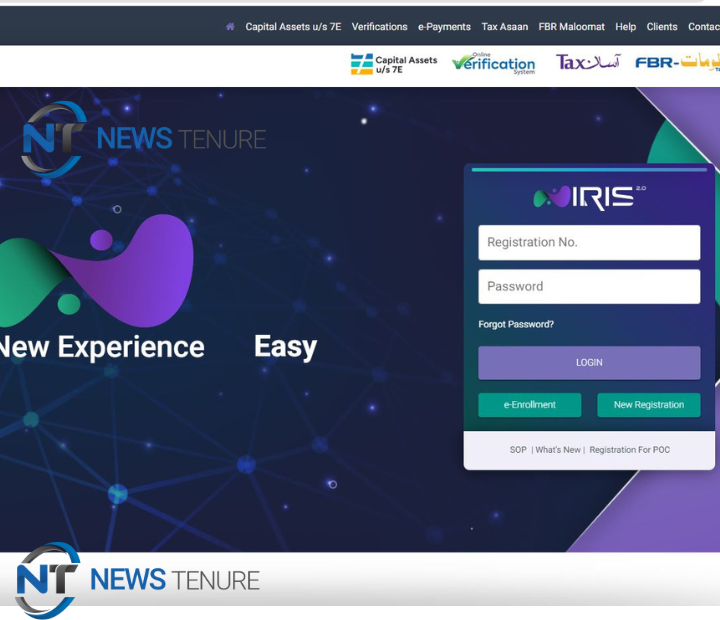Introduction
In the digital generation, in which visuals dominate the net panorama, pics play a essential position in capturing and keeping users’ interest. However, incorporating tremendous pix into websites and applications can pose challenges related to performance, load instances, and consumer experience. Image optimization strategies offer a strategy to address these concerns even as preserving visual appeal and accessibility. This article will discover the significance of photo optimization, speak numerous optimization strategies, and provide sensible suggestions for reaching most advantageous image overall performance.
What Is Image Optimization ??
1. Understanding Image Optimization
1. The Role of Images in Digital Media
2. Definition and Objectives of Image Optimization
3. Benefits of Image Optimization: Performance and User Experience
Types of photos that can optimize
Images are an vital part of websites, programs, and virtual media, improving visual enchantment and conveying facts effectively. However, incorporating remarkable snap shots into digital systems can pose demanding situations related to overall performance, load instances, and consumer enjoy. By optimizing different types of photos, developers and designers can attain better performance even as preserving visible fine. Let’s explore some not unusual forms of photos that may be optimized:
Photographs
Images are extensively utilized in various domains, along with e-trade, blogs, and news web sites. When optimizing photographs, compression techniques play a vital position. By using lossy compression algorithms like JPEG, developers can drastically lessen the record size with out considerable lack of visual satisfactory. Adjusting the compression stage allows locating the right stability between picture exceptional and document size.
Icons and Logos:
Icons and symbols are often used for branding functions and user interface factors. These photographs commonly include simple shapes and confined shades, making them suitable for lossless compression formats like PNG. By optimizing icons and emblems, developers can lessen document sizes whilst maintaining the sharpness and readability of the pics.
Three. Infographics and Illustrations: Infographics and illustrations integrate text and pix to present records in a visually appealing way. These pix can be optimized the use of a aggregate of techniques. Vector-based pics, which include SVG (Scalable Vector Graphics), provide a resolution-impartial layout that may be scaled without loss of quality. Additionally, proper compression and optimization of embedded photos inside infographics can similarly decorate performance.
User-Generated Content
User-generated content, such as profile pictures and uploaded snap shots, requires optimization to preserve performance on structures with consumer interaction. By putting most dimensions and record size limits, developers can make certain that user-generated pix meet specific criteria. Additionally, making use of compression strategies for the duration of the add procedure can optimize those pictures for most reliable overall performance and storage efficiency.
Background Images:
Background pix are regularly used to beautify the visible enchantment of web sites and applications. To optimize historical past photographs, builders can use strategies like revolutionary loading or lazy loading. Progressive loading lets in the image to load gradually, beginning with a low-satisfactory model and steadily enhancing the excellent as the photograph is being rendered. Lazy loading defers the loading of historical past snap shots till they’re about to be displayed, lowering the preliminary load time.
Thumbnails:
Thumbnails are smaller variations of larger snap shots used for preview functions. Optimizing thumbnails entails resizing the snap shots to the best dimensions and the usage of an optimized file format which include JPEG or PNG. By decreasing the report size of thumbnails, developers can enhance load times and limit bandwidth usage.
Animated Images:
Animated pix, together with GIFs or SVG animations, are popular for adding dynamic elements to web sites and programs. Optimizing lively images entails balancing visual satisfactory and document size. Techniques like reducing frame charges, proscribing color palettes, or utilizing greater modern codecs like APNG (Animated Portable Network Graphics) or WebP can help reap smaller file sizes without compromising the overall animation revel in.
Optimizing exclusive sorts of pix is vital for improving performance, load instances, and person enjoy in digital structures. By using appropriate compression strategies, the usage of optimized document codecs, and enforcing responsive and lazy loading strategies, developers can strike a balance between visual attraction and overall performance optimization. Whether it is pictures, icons, infographics, or user-generated content, optimizing pix guarantees that websites and applications supply a quick, efficient, and visually enticing enjoy to users.
Factors Affecting Image Performance
# Image Size and File Formats
# Impact of Image Quality and Compression
# Connection Speed and Bandwidth Considerations
# Mobile Devices and Responsive Design Challenges
Optimization for SVG photographs
Scalable Vector Graphics (SVG) is a popular photograph layout that makes use of XML-based markup to describe two-dimensional vector pix. SVG photographs have come to be increasingly more conventional on the net because of their scalability and flexibility across distinct display screen sizes and resolutions. However, optimizing SVG photographs is vital to make sure top-rated overall performance and efficient shipping. Here are key considerations for optimizing SVG photographs:
Minimize File Size
SVG photos can now and again comprise pointless elements or redundant code. Removing or optimizing those factors can extensively reduce the document size with out compromising visible excellent. Tools like SVGO (SVG Optimizer) can robotically cast off pointless metadata, clean up code, and compress SVG files.
Simplify Shapes and Paths:
SVG files regularly consist of complicated shapes and paths. Simplifying those shapes and paths by means of decreasing the number of points or making use of simpler curves can cause smaller report sizes. This optimization technique facilitates beautify rendering performance and decreases the amount of information that wishes to be transmitted.
Remove Unnecessary Markup:
SVG documents may contain extra markup, including remarks or unused factors. Cleaning up the markup and casting off useless code can similarly lessen document size and enhance parsing and rendering performance.
Optimize Colors:
Reducing the variety of colors utilized in an SVG photograph can bring about smaller record sizes. By utilising coloration palettes effectively, together with limiting the variety of particular colorations or changing gradients to strong shades, you could optimize the photograph without compromising visual pleasant.
Use External CSS:
SVG pix frequently include styling records inside the report. However, moving the styling information to an outside CSS file can beautify reusability and decrease duplication across more than one SVG documents. External CSS allows for better upkeep and may result in smaller SVG file sizes.
Implement Compression:
Compressing SVG documents can further reduce their length for efficient shipping over the community. Techniques like Gzip compression or SVGZ (compressed SVG) format can appreciably decrease record sizes, ensuring quicker load instances.
Cache and Delivery:
SVG pictures, like other net resources, can benefit from caching strategies. Implementing right caching headers permits the browser to save the SVG report locally, decreasing subsequent load times for returning site visitors. Additionally, leveraging Content Delivery Networks (CDNs) for SVG photograph delivery guarantees quicker and extra dependable get admission to globally.
By applying those optimization techniques, developers can improve the performance, load instances, and scalability of SVG pics. Optimized SVG documents bring about faster rendering, reduced bandwidth usage, and more advantageous person reports throughout numerous devices and display sizes. With the growing adoption of SVG pics, it is critical to prioritize optimization to gain ideal overall performance in present day net programs.
Image Optimization Techniques
# Lossless Compression Techniques
# PNG Optimization
# GIF Optimization
# WebP Optimization
# Compression Techniques
# JPEG Optimization
# Progressive JPEG
# SVG Optimization
#Responsive Images and Adaptive Images
# Sizes Attributes
# Picture Element and Art Direction
# Lazy Loading and Infinite Scroll
Intersection Observer API
# Lazy Loading Libraries and Plugins
Content Delivery Networks (CDNs) for Image Delivery
Tools and Technologies for Image Optimization
# Photograph Editing Software
# Adobe Photoshop
# GIMP (GNU Image Manipulation Program)
# Command-Line Tools and Libraries
# Image Magick
Online Image Optimization Service 1.Cloudinary
2. Kraken.Io
3. TinyPNG
four. Plugins and Extensions for Content Management Systems (CMS)
5. WordPress Plugins
6. Drupal Modules
Best Practices for Image Optimization
# Image Resizing and Cropping
# Minimizing HTTP Requests
# Leveraging Browser Caching
# Implementing Lazy Loading Techniques
# Photograph Loading Performance on Mobile Devices
# Optimizing Images for Social Media Sharing
# Using Image Metadata for SEO
# Continuous Monitoring and Iterative Improvement
Image Optimization for search engine marketing
1. Optimizing Alt Text and Image Titles
2. Image Sitemaps
three. Structured Data Markup for Images
four. Page Speed and SEO Ranking Factors
File size reduces after optimization
In latest virtual age, in which information is constantly being shared and transmitted, record size plays a important role in determining the performance and velocity of records switch. Large report sizes can slow down processes, devour extra bandwidth, and absorb treasured garage area. However, optimizing documents can drastically lessen their length without compromising their fine. In this article, we can explore numerous techniques and strategies to optimize document length and beautify records management.
1. Image Optimization:
Images are regularly the biggest participants to document length, in particular in web layout and multimedia applications. By using picture optimization strategies, you could considerably lessen the scale of picture documents with out compromising visible first-class. Some effective strategies consist of:
a. Compression: Utilize image compression algorithms inclusive of JPEG, PNG, or WebP codecs. These codecs employ various compression techniques, including lossless and lossy compression, to reduce document size.
B. Resize and Crop: Adjust the size of an picture to suit the desired show length, ensuring which you eliminate any needless portions or extra resolution.
C. Remove Metadata: Many pics contain extra metadata which include EXIF facts. Removing this metadata can considerably lessen the file size.
2. Video Compression:
Similar to pix, motion pictures also can be optimized to lessen their report length with out sacrificing visual high-quality. Here are some powerful video compression techniques:
a. Bitrate Adjustment: Lowering the video’s bitrate can significantly lessen file length. However, putting a balance among size discount and preserving ideal pleasant is critical.
B. Resolution and Frame Rate: Reducing the video’s decision and frame charge can similarly decrease the record size whilst nonetheless providing a satisfactory viewing experience.
C. Video Codecs: Implement modern video codecs like H.264, H.265 (HEVC), or VP9, which offer higher compression performance as compared to older formats.
3. Document Optimization:
Text-based documents, consisting of PDFs and Word files, also can be optimized to lessen document size:
a. Font and Formatting: Minimize the use of complicated fonts and formatting options, as they can increase the record length. Stick to normally used fonts and hold formatting simple.
B. Compression: Compress the document the use of report compression equipment or via changing it right into a compressed layout like ZIP.
C. Remove Unnecessary Elements: Eliminate any needless photos, embedded items, or hidden information that can make contributions to the record length.
4. Code Optimization:
When developing software programs or web sites, optimizing code can help reduce the overall report length:
a. Minification: Remove pointless characters, remarks, and whitespace from the code. Tools like UglifyJS or Closure Compiler can automate this process.
B. GZIP Compression: Enable GZIP compression on internet servers to compress code documents in the course of transmission, appreciably decreasing their length.
C. External Libraries: Use libraries and frameworks that provide modular loading, permitting handiest the vital additives to be loaded whilst needed.
Optimizing file size is a important thing of green facts management. By using diverse optimization strategies together with picture compression, video compression, record optimization, and code optimization, you can substantially reduce document sizes without compromising nice. This now not only improves information transfer speeds but also optimizes storage usage. Implementing these strategies will empower you to make the maximum of constrained bandwidth, storage sources, and decorate the general consumer revel in.
Image Optimization Case Studies
1. E-trade Website
2. News Publishing Platform
3. Portfolio Website
Image optimization is a crucial thing of internet development and design, as it drastically affects the performance, consumer revel in, and common achievement of on-line structures. By information the elements affecting image performance, implementing appropriate optimization strategies, and following great practices, developers and designers can strike a balance among visual appeal and most excellent overall performance. From utilizing compression algorithms to leveraging lazy loading and responsive layout, there are various techniques to optimize photos correctly. Moreover, the object highlighted diverse tools, technologies, and plugins which could streamline the image optimization process. By adopting those practices and constantly monitoring and refining image performance, websites and applications can provide users with a continuing visual experience, enhance search engine visibility, and drive better engagement. Ultimately, prioritizing photograph optimization ensures that digital systems stay compelling, efficient, and handy in an increasingly visible global.



